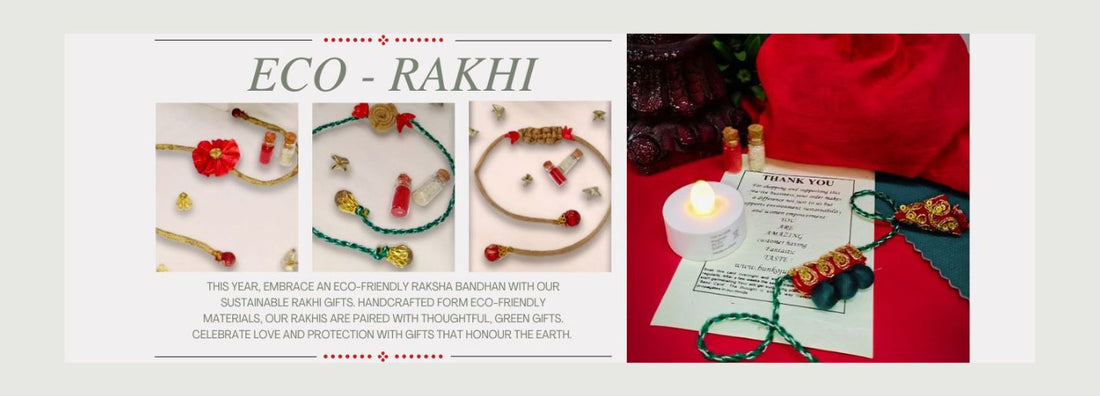
DIY Ideas for Making Your Own Eco-Friendly Rakhi
Share

Introduction:
Raksha Bandhan, a cherished festival celebrating the bond between brothers and sisters, is an occasion that brings families together. Traditionally, sisters tie a Rakhi, a sacred thread, on their brother's wrist, symbolizing love and protection. This year, why not add an eco-friendly twist to your celebrations by creating a Rakhi that is not only beautiful but also kind to the planet?
In this blog, we will explore how you can make your own eco-friendly Rakhi using upcycled textile scraps. Not only is this a great way to show your love, but it also contributes to environmental sustainability.
The Importance of Upcycling Textiles
Upcycling is the process of transforming waste materials into new products of better quality or environmental value. When it comes to textiles, upcycling helps reduce the amount of waste that ends up in landfills, conserves resources, and reduces the environmental impact of textile production.
1. Environmental Benefits: Textile waste is a significant environmental problem. By upcycling, we reduce the need for new materials, decrease pollution, and save water and energy.
2. Creative Expression: Upcycling allows for unique and creative designs that reflect personal style and creativity.
3. Cost-Effective: Using materials you already have at home means spending less money on new items.
Why Upcycle Textiles for Rakhi?
Rakhi is more than just a thread; it is a symbol of love, protection, and a promise. By making a Rakhi from upcycled textiles, you add another layer of meaning to this special day:
1. Sustainability: Show your commitment to the environment by reducing waste.
2. Personal Touch: Handmade Rakhis are unique and carry the love and effort you put into making them.
3. Creativity: Upcycled Rakhis can be as simple or elaborate as you want, allowing for endless creative possibilities.

DIY: Making a Small Fabric Flower Rakhi
Creating a fabric flower rakhi is a fun and simple project that you can do with materials you already have at home. Here's how you can make your own:
Materials Needed:

- Textile scraps (preferably cotton or silk)
- Scissors
- Needle and thread
- A small button or bead
- A piece of thin ribbon or cord
Instructions:
1. Cut the Fabric:

- Cut a small circle (about 3-4 inches in diameter) from your textile scrap. This will form the base of your flower.
- Cut a second smaller circle (about 2 inches in diameter) from a different piece of fabric for added contrast.
2. Create the Flower Petals:

- Take the larger circle and sew a running stitch around the edge. Pull the thread tight to gather the fabric into a flower shape and secure with a knot.
- Repeat with the smaller circle.
3. Assemble the Flower:

- Place the smaller gathered circle on top of the larger one and sew them together at the center.
- Attach a small button or bead to the center of the flower for added decoration.
4. Attach the Ribbon:

- Cut a piece of ribbon or cord to the desired length for tying the rakhi.
- Sew the flower onto the center of the ribbon.
5. Finishing Touches:
- Trim any loose threads and ensure all parts are securely attached.
Your eco-friendly fabric flower Rakhi is now ready to adorn your brother’s wrist, symbolizing not only your bond but also your commitment to a sustainable future.

Conclusion
Creating your own eco-friendly Rakhi is a wonderful way to celebrate Raksha Bandhan with a conscious effort towards sustainability. By upcycling textile scraps, you can make a unique and meaningful Rakhi that reflects your love and care for both your brother and the planet. So, gather your materials, get creative, and make this Raksha Bandhan extra special with a handmade, eco-friendly Rakhi.
If you want to buy beautifully crafted rakhis made by women empowered through sustainable practices, check out the our website bunkojunko.com
Support a great cause while celebrating this special occasion! https://bunkojunko.com/collections/eco-friendly-rakhi
